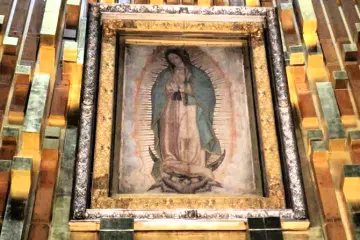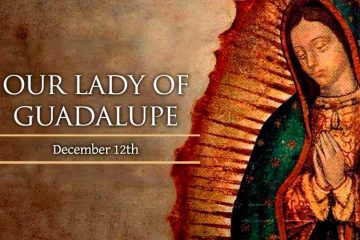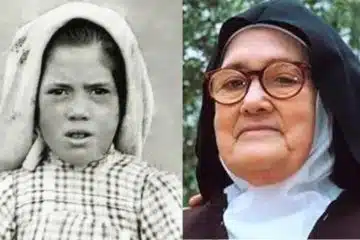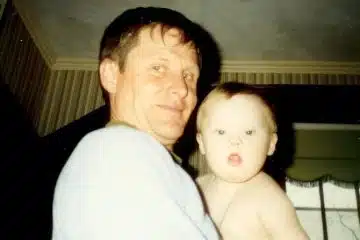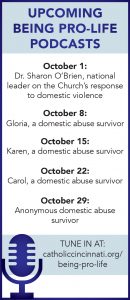Being Pro-Life: Understanding and Combating Domestic Violence
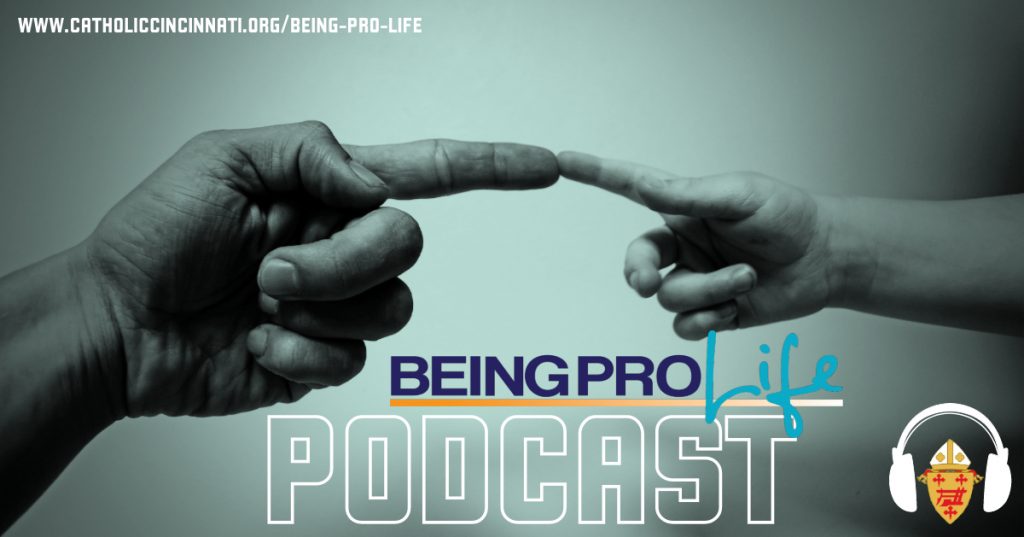 Gloria was 4 when her father first started physically abusing her. As a young child she often hid in her closet, afraid she might die, feeling like she was a bad person. She learned not to fight back or cry or scream too much, knowing if she did, the beatings would be worse for both her and her mother. She never told a teacher or grandparent for fear her father would kill her.
Gloria was 4 when her father first started physically abusing her. As a young child she often hid in her closet, afraid she might die, feeling like she was a bad person. She learned not to fight back or cry or scream too much, knowing if she did, the beatings would be worse for both her and her mother. She never told a teacher or grandparent for fear her father would kill her.
Gloria was born to young parents, 15 and 17, who were also reared in dysfunctional families. Gloria chose not to leave, not only out of fear, but also to protect her younger siblings. Eventually, she got involved with a bad crowd in high school. One day she went to a party, where she was locked in a room and sexually assaulted. When her father found out, he responded with further physical abuse. Suspended from school, Gloria completed her GED, got a job and moved out of the house at age 17. The abuse did not end there, however. Growing up in that environment with low self-esteem, she soon married a man who abused her. When she finally got out of that abusive situation, she walked right into another, then another. It is a difficult cycle to break.
There can be many reasons. Abusers are often controlling, both financially and socially, so a victim may not have access to financial means or a place to go. People who are abusive and manipulative are often charming and have people who will defend them in court. Most importantly, an abused person often fears for her / his life, or the lives of their children.
The National Coalition Against Domestic Violence (NCADV) reports that one in four women and one in seven men have been victims of severe physical violence (beating, burning, strangling) by an intimate partner. Domestic violence hotlines in the U.S. receive more than 20,000 calls per day.
It is a big problem, and the Catholic Church recognizes it as such. The United States Conference of Catholic Bishops (USCCB) strongly condemns it and offered guidance for parishes in its 2002 document, “When I Call for Help.” The USCCB Secretariat of Pro-Life Activities also published a short but helpful document, “Life Matters.” You can download it for free as a flyer or bulletin insert for parishes, click here
What Can We Do?
I spoke with Dr. Sharon O’Brien, director of Catholics for Family Peace, an education and research initiative from Catholic University of America, who also works closely with the USCCB to help Catholic clergy and lay leaders recognize domestic abuse and respond with compassion. Dr. O’Brien mentions five things:
1. Pray for those affected by domestic abuse, including it in the prayers of the faithful.
2. Educate yourself on the issue. Watch the video, listen to the podcast, and download the USCCB bulletin inserts and brochures to show your parishioners.
3. Believe someone if they tell you they are in an abuse situation, and ask what you can do.
4. Make people aware of the domestic violence website/hotline at 1-800-799-SAFE (7233).
5. Donate to the hotline just mentioned at www.thehotline.org, Catholics for Family Peace at www.catholicsforfamilypeace.org, to Catholic Charities or a local center.
In addition to Gloria, I spoke to other victims of domestic violence who all shared their stories. Visit our website at www.catholiccincinnati.org/being-pro-life to watch the video interviews, hear the full stories of each guest and subscribe to the weekly podcasts. There you can also find all the links and downloads mentioned in this article.
We will continue to help raise awareness of this issue, utilize in our parishes the free resources offered by the USCCB, and ensure people who feel trapped by domestic violence get the help they need to break free of their unsafe situations.




